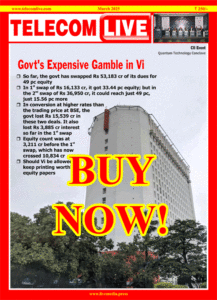Trai suggests satcom spectrum price at 4% of AGR
India’s telecom regulator Friday recommended the administrative allocation of satcom spectrum for a fee pegged at 4% of adjusted gross revenue (AGR), to be assigned for five years, paving the way for commercial rollout of next-generation satellite internet services in India.
The Telecom Regulatory Authority of India (TRAI) has proposed that both geostationary (GSO) and non-geostationary (NGSO)-based Fixed Satellite Services (FSS) operators will be required to pay 4% of their Adjusted Gross Revenue (AGR), with a minimum annual charge of ₹3,500 per MHz spectrum block.
Additionally, operators offering services in urban areas would have to shell out ₹500 per subscribers annually, the TRAI said in its much-awaited satcom recommendations on Friday.
NGSO FSS operators will need to pay quarterly subscriber fees based on the number of urban users, using a formula of 125 multiplied by the number of urban subscribers.
Trai has proposed a five-year licensing framework, extendable by two years, for both geostationary (GSO) and non-geostationary (NGSO) satellite services. The recommendations follow consultations with over 40 stakeholders and suggest a structured roadmap for assigning spectrum across multiple frequency bands, including Ku, Ka, Q/V, L, S, and C bands.
TRAI has urged the government to consider subsidies for NGSO user terminals in unserved and underserved rural areas to promote digital inclusion.
Satellite Earth Stations may be permitted in IMT (mobile network) bands like 42.5–43.5 GHz in remote, uninhabited regions, to avoid interference with terrestrial services.
It also suggested that spectrum be assigned within 30 days of application, provided the applicant has received in-principle clearance from the government.
Operators using shared frequencies must coordinate in “good faith,” with TRAI proposing a potential last-resort “spectrum split” model similar to U.S. FCC guidelines in case of coordination failure.



